Trekking in Nepal: Annapurna Circuit

The Annapurna CircuitIn the heart of the Himalayas, it is one of the most spectacular trekking routes in the world. The complete route, from Beshi Sahar to Nayapulis carried out in about 18 days and the main difficulty is overcoming a high altitude pass, Thorong La (5,416m).
The Annapurna Circuit The landscape ranges from rural Nepal, dotted with small villages and rice fields, to the high peaks of the eight-thousand-metre peaks, lush forests and deserts. In addition to the great Annapurna Barrier Range, where at the end of the route you can see the Annapurna I (8,091m)we will see two more eight-thousanders, the Manaslu (8.163m) and the Dhaulagiri (8.167m).
Best time of the year: September-December and March-May
Duration: 10 - 19 days.
Distance: 260 kms. From Besi Sahar to Nayapul with excursion to Lake Tilicho.
Maximum height: 5,416m at Throung La.
STAGE 1: Besi Sahar - Bahundanda (see stage)
Besi Sahar is the last place to be reached by the tarmac road, where the bus from Kathmandu makes its last stop. From here, you can take an off-road taxi or start walking. The route follows the fertile Marsyangdi valley upstream, filled with rice fields, tiny villages and impenetrable jungle.
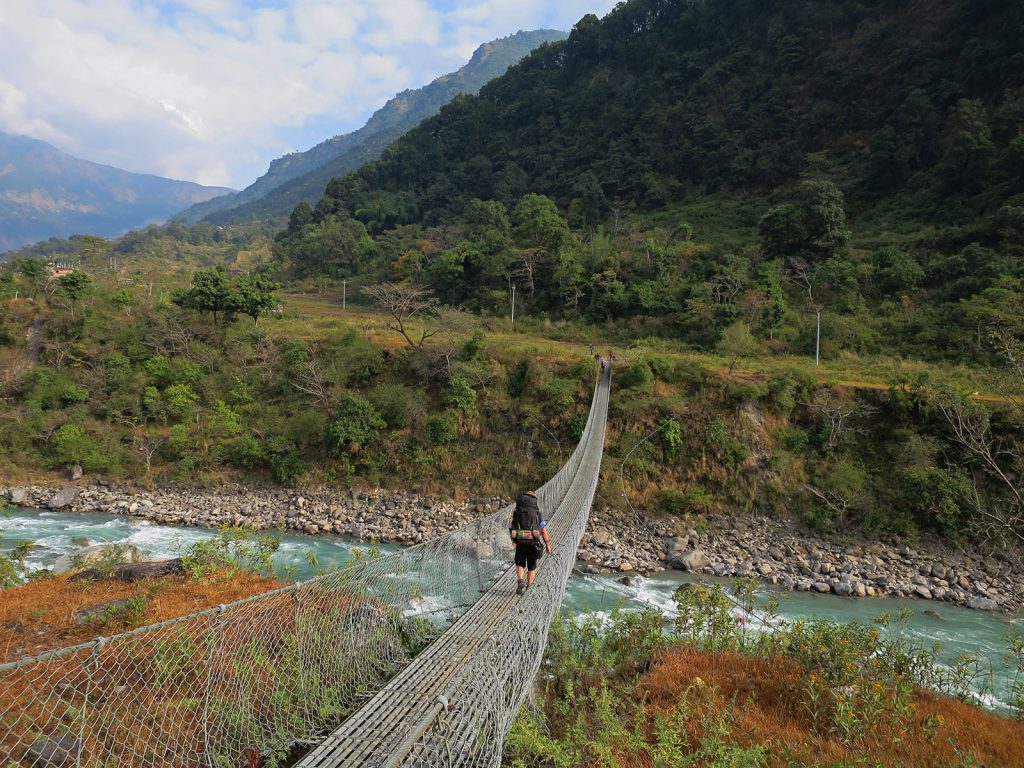
STAGE 2: Bahundanda - Jagat (see stage)
The road continues this second day through an agricultural landscape, between rice fields and jungle, to Syange, where the valley becomes a boxed-in valley.
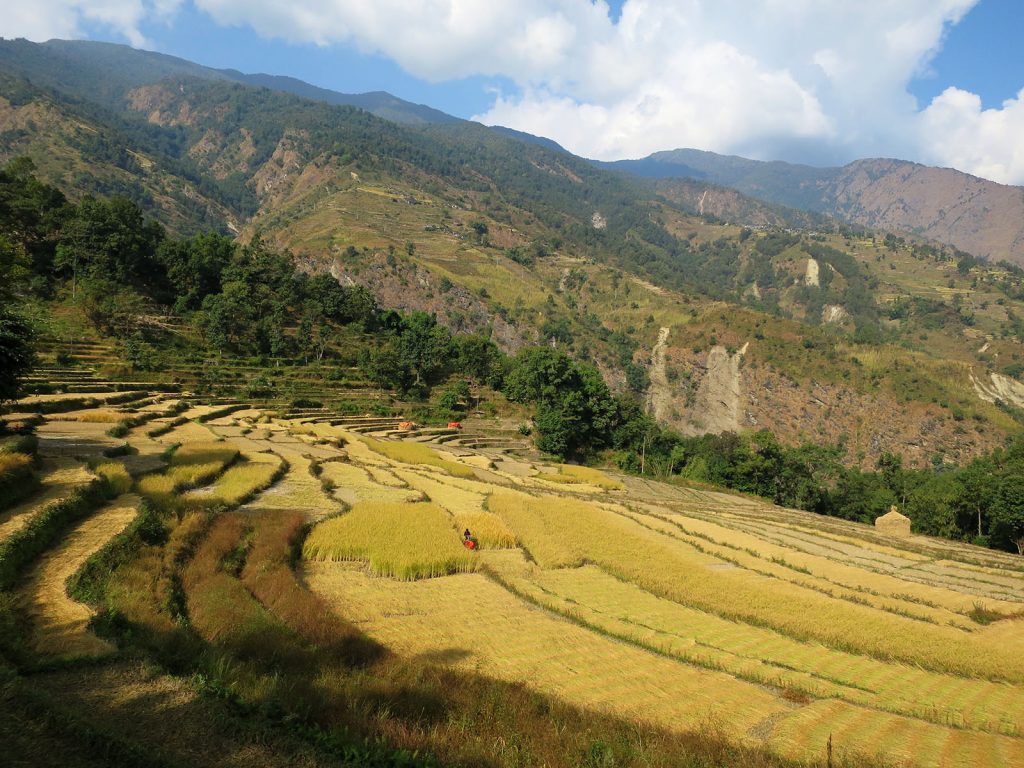
STAGE 3: Jagat - Dharapani (see stage)
The valley is very deep, with steep walls on both sides plunging down to the river bottom. At Tal, the valley opens out into a vast plain, the bed of an ancient lake, through which the river meanders.
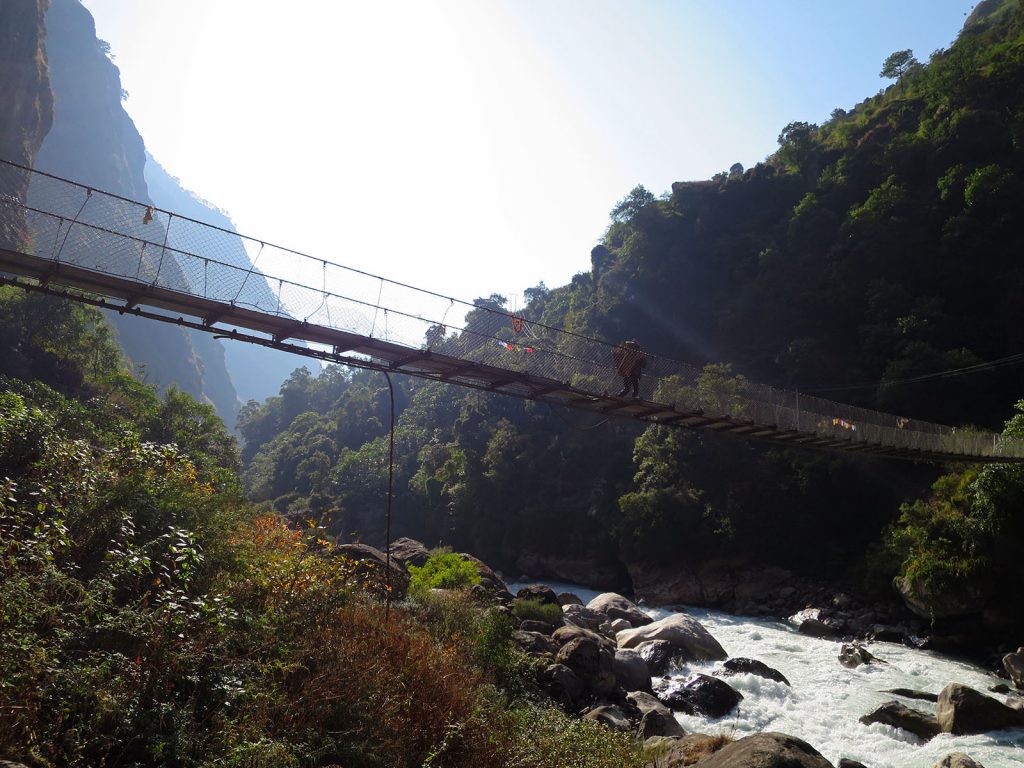
STAGE 4: Dharapani - Chame (see stage)
After Dharapani, the route turns west and Annapurna II (7,937m) can be seen in the background. The path gains height through a thick forest of firs, pines and rhododendrons on the way to Timang, an exceptional viewpoint from which to contemplate Manaslu (8,163m).
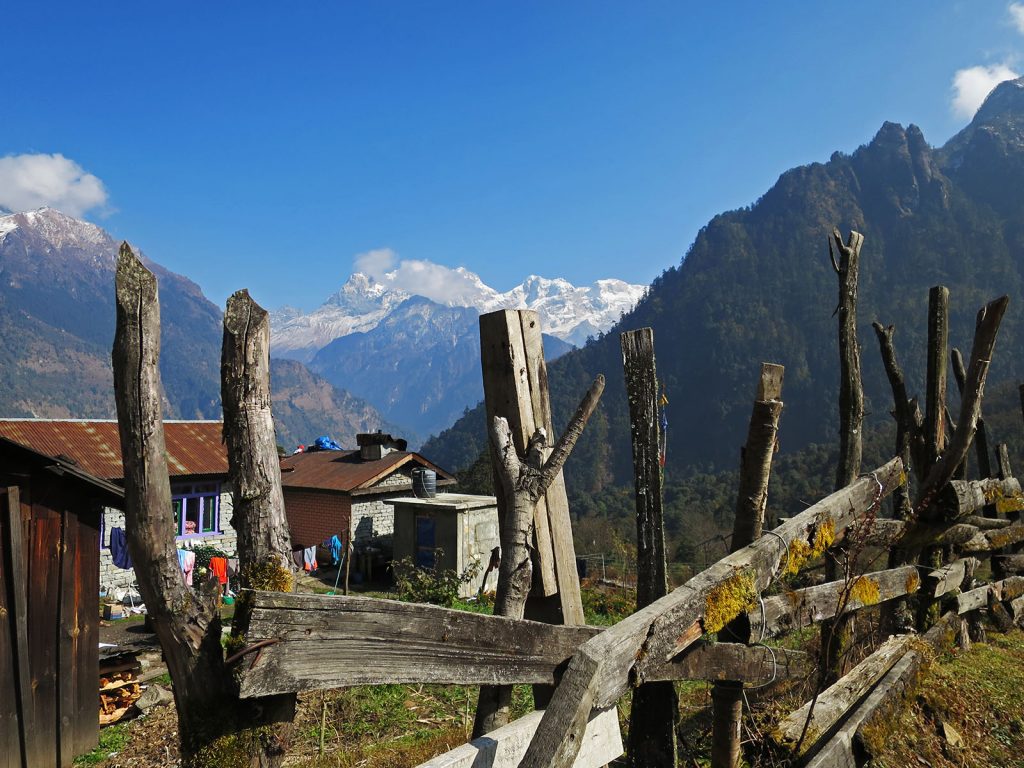
STAGE 5: Chame - Pisang (see stage)
The route runs through dense pine forest. To the south, the barrier of the Lamjung Himal and Annapurna Mountains acts as a parapet against the wet monsoon winds. The landscape begins to lose the freshness of previous days as we gain altitude. The end at Pisang offers some of the best views of Annapurna II (7,937m) of the entire route.
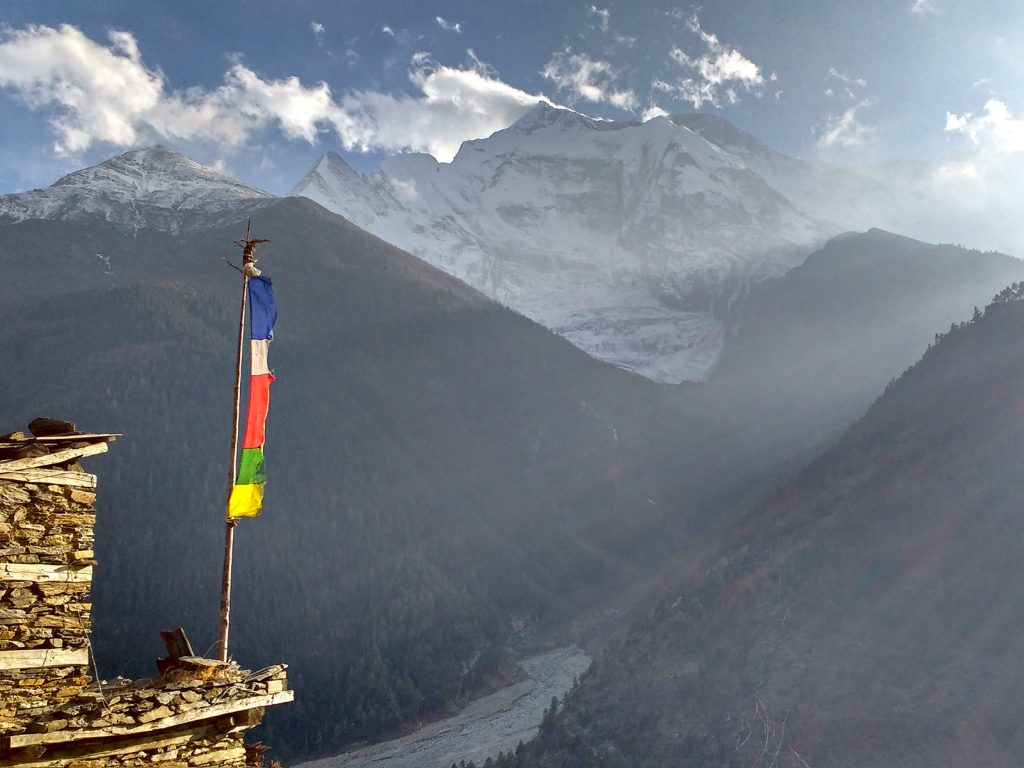
STAGE 6: Pisang - Manang (see stage)
The trail leaves the floor of the Marsyangdi valley to climb Ghyaru. The view from the great stupa towards the Annapurna, Pisang Peak or Myabase Danda is spectacular. The Tibetan influence of these villages is palpable. The route runs through an austere landscape.
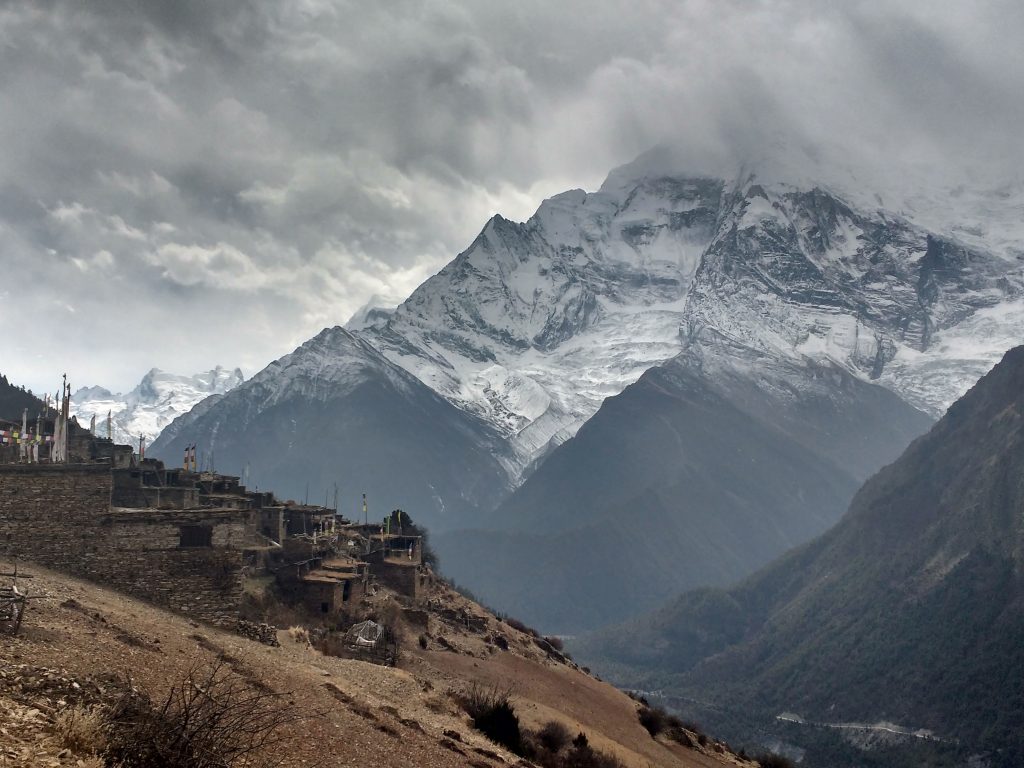
STAGE 7: Manang - Sri Kharka (see stage)
On arrival in Manang, it's a good idea to take an acclimatisation hike before continuing upwards. There are several one-day treks, although the two-day Tilicho Lake trek is well worth the effort. Shortly after Manang we leave the Annapurna route to head to Tilicho Lake, one of the highest lakes in Nepal, to complete our acclimatisation for the next few days.
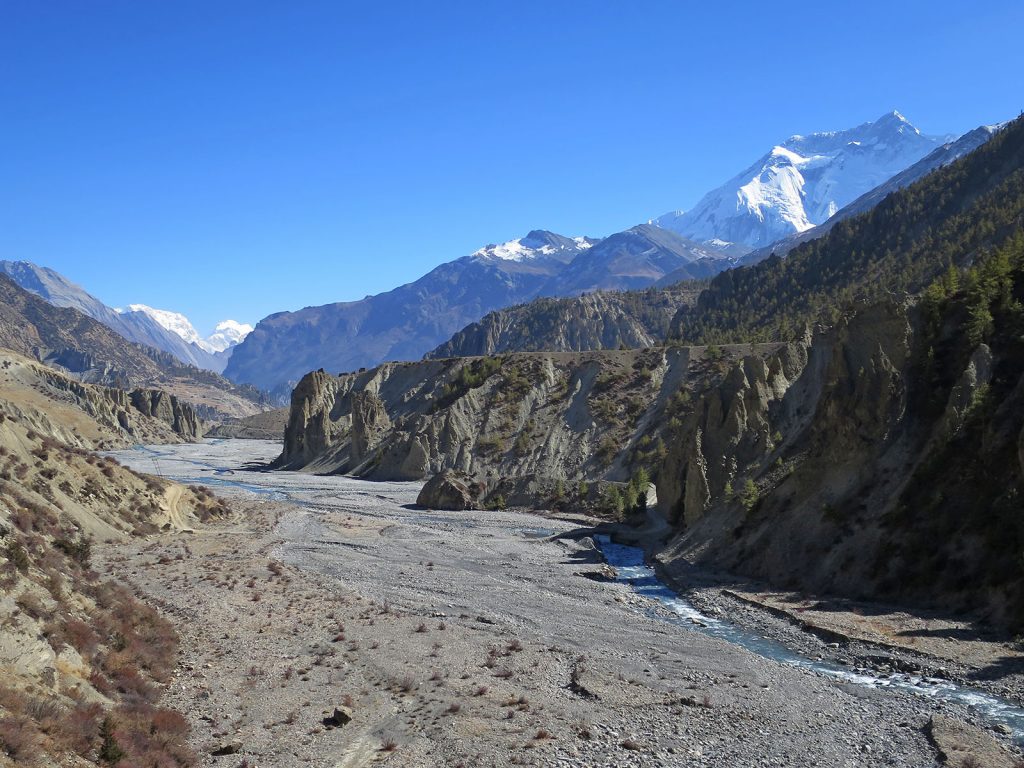
STAGE 8: Lake Tilicho (acclimatisation) (see stage)
The mountain scenery on this hike is spectacular and is one of the highlights of the route. The trail crosses the narrow Marsyangdi valley flanking a very steep scree slope. In the background, the wall between Khangsar Khan and Tilicho Peak is breathtaking. The climb to the lake, at almost 5,000m, is strenuous due to the altitude.
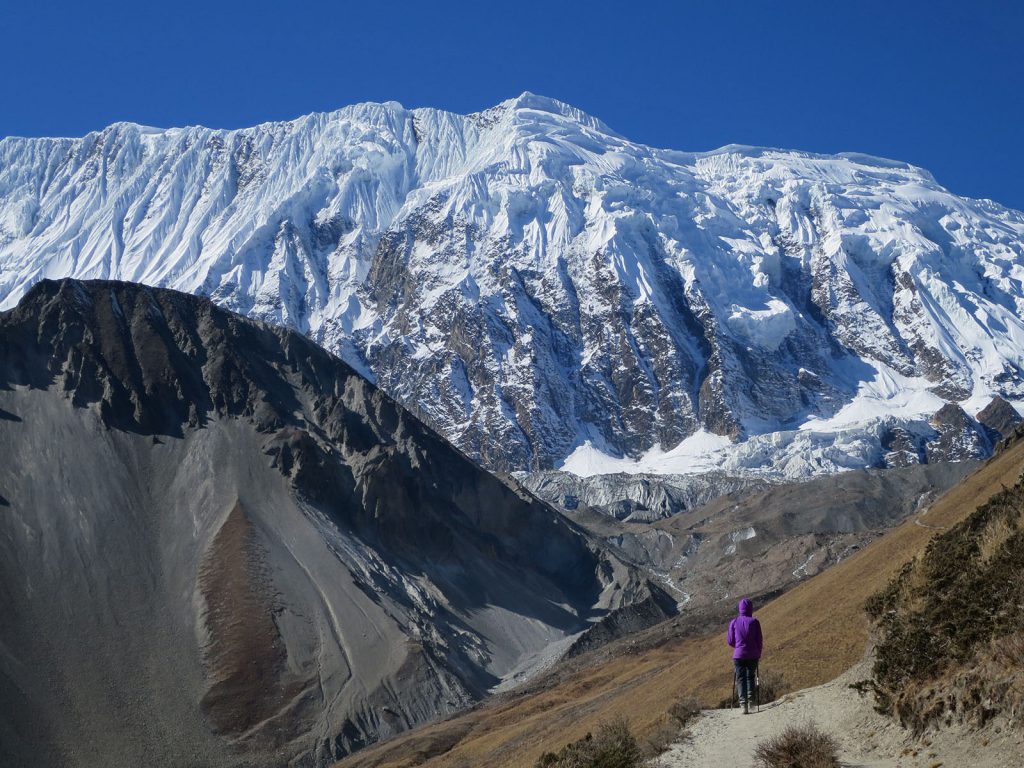
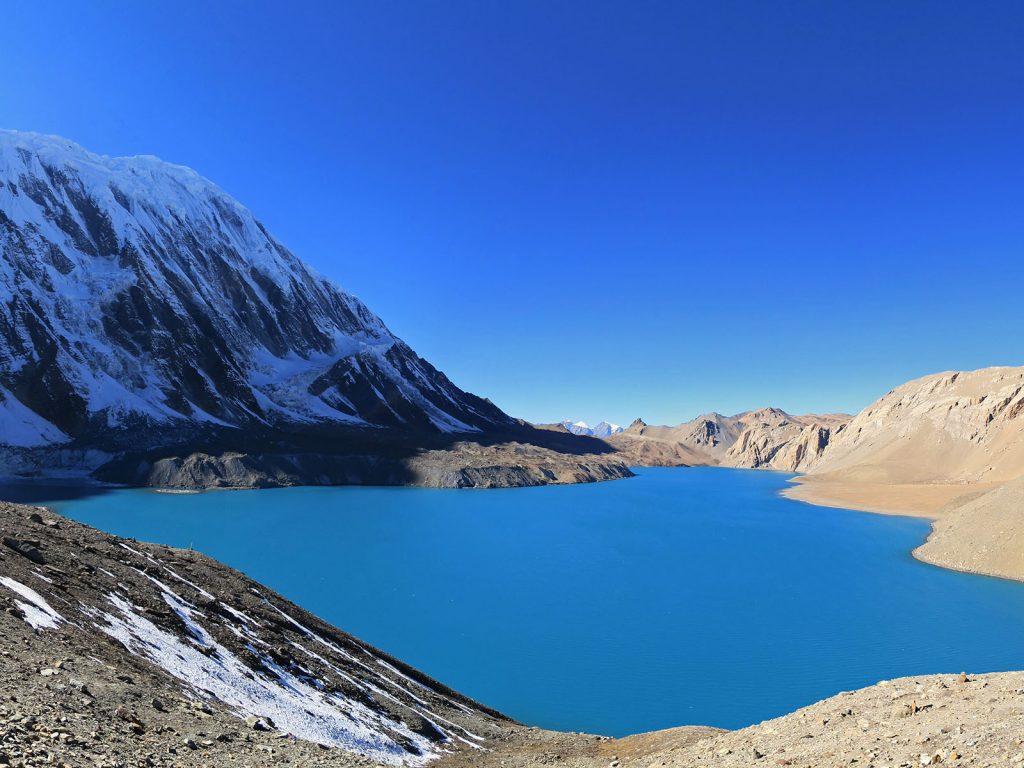
STAGE 9: Sri Kharka - Letdar (see stage)
The route changes valleys for the first time since we started at Besi Sahar. We leave the Marsyangdi valley and enter the Thorung Khola valley, in an increasingly arid landscape.
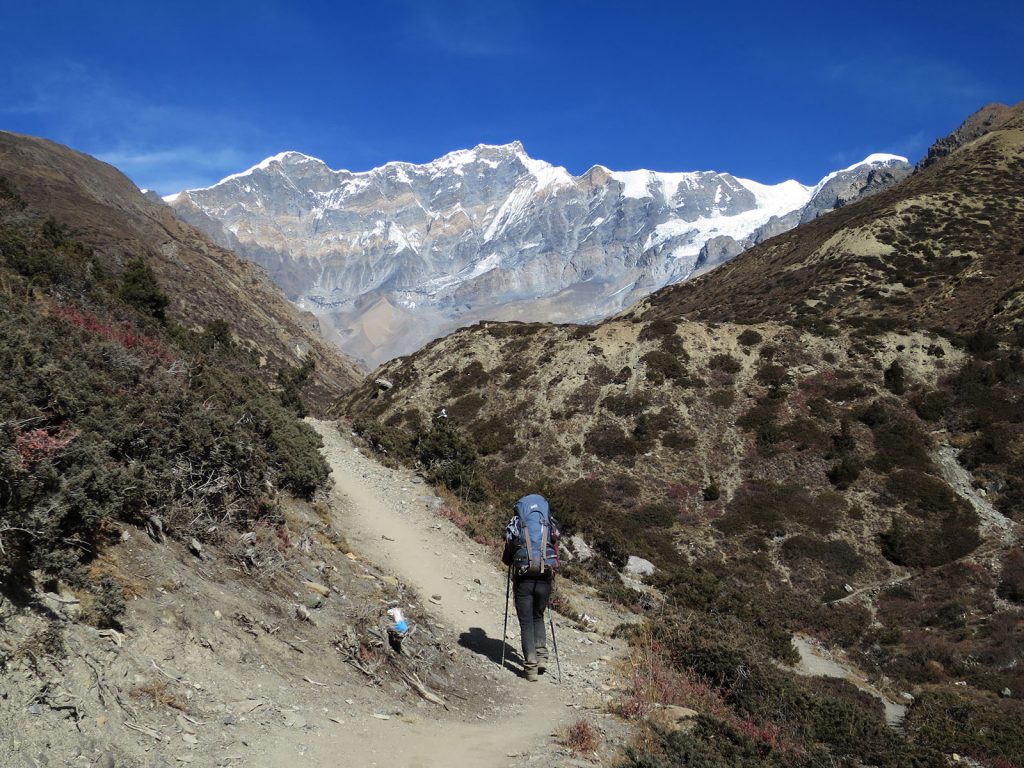
STAGE 10: Letdar - Thorung Phedi (see stage)
A very short stage with the only objective to continue acclimatising for Thorung La the following day.
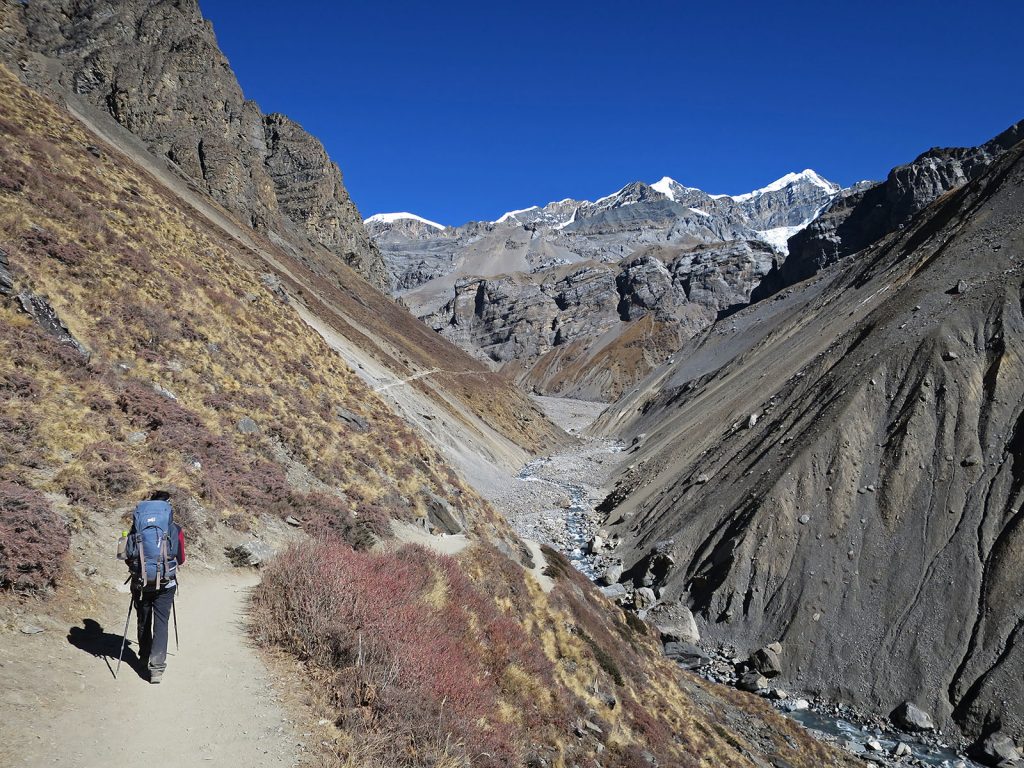
STAGE 11: Thorung Phedi - Ranipauwa (see stage)
Today is the decisive day to climb Thorung La (5,416m). The climb is exhausting because of the altitude, but when you reach the top, the joy is uncontainable. The atmosphere at the top of the pass is festive, an unrepeatable moment, but there is still the whole descent, almost 1,800m of descent to go. On the other side awaits the kingdom of Mustang.
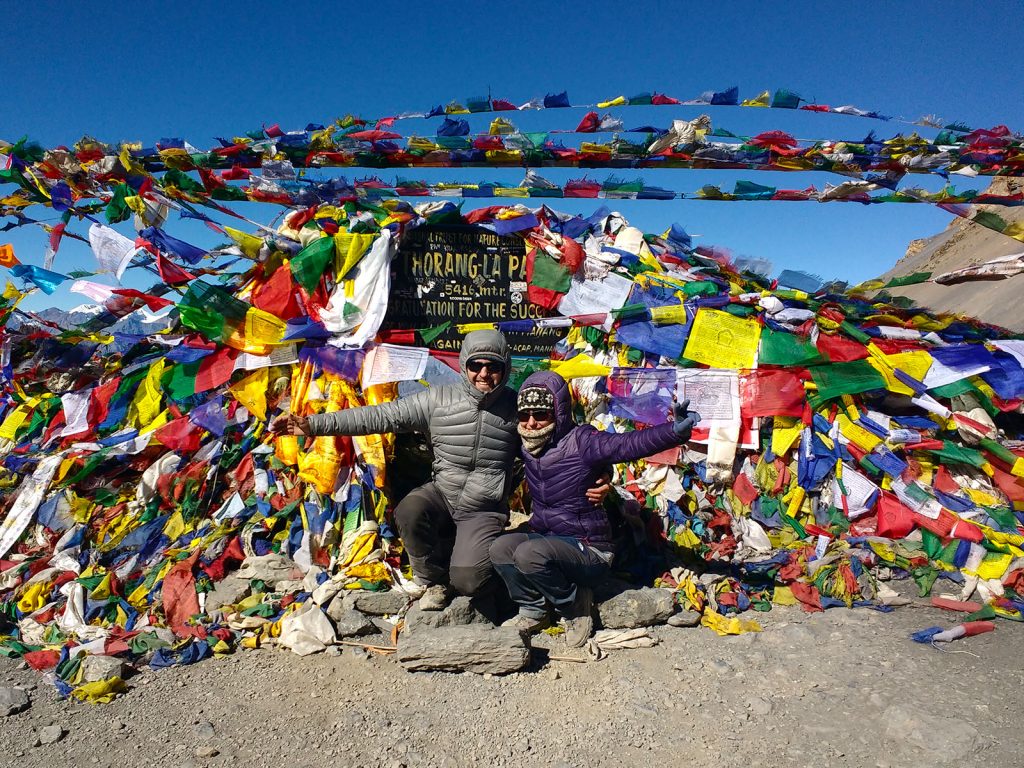
STAGE 12: Ranipauwa - Jomson (see stage)
This is the start of a new trek where there is still much to discover. Most trekkers end their journey here or will end it in Jomson, and the trail is deserted again after the last few days. The landscape is terribly barren, we are in the realm of Mustang, at the head of the Kali Gandaki, the deepest valley on earth. Ahead lies Dhaulagiri (8,172m) and Annapurna I (8,091m), which we have not yet been able to see.
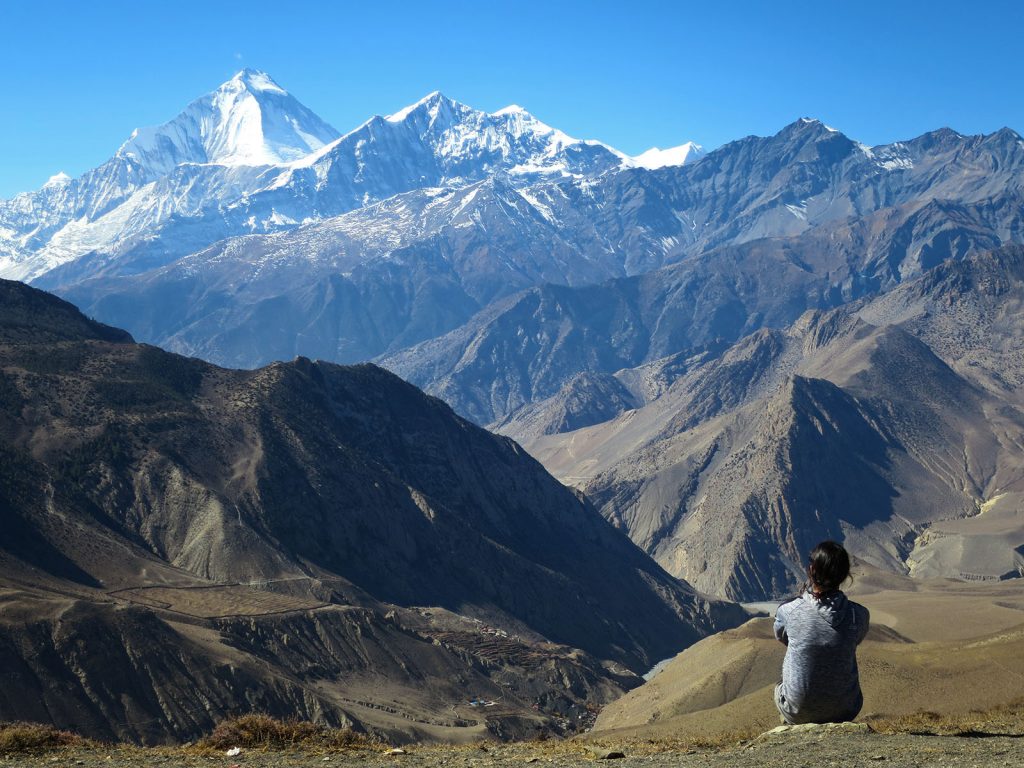
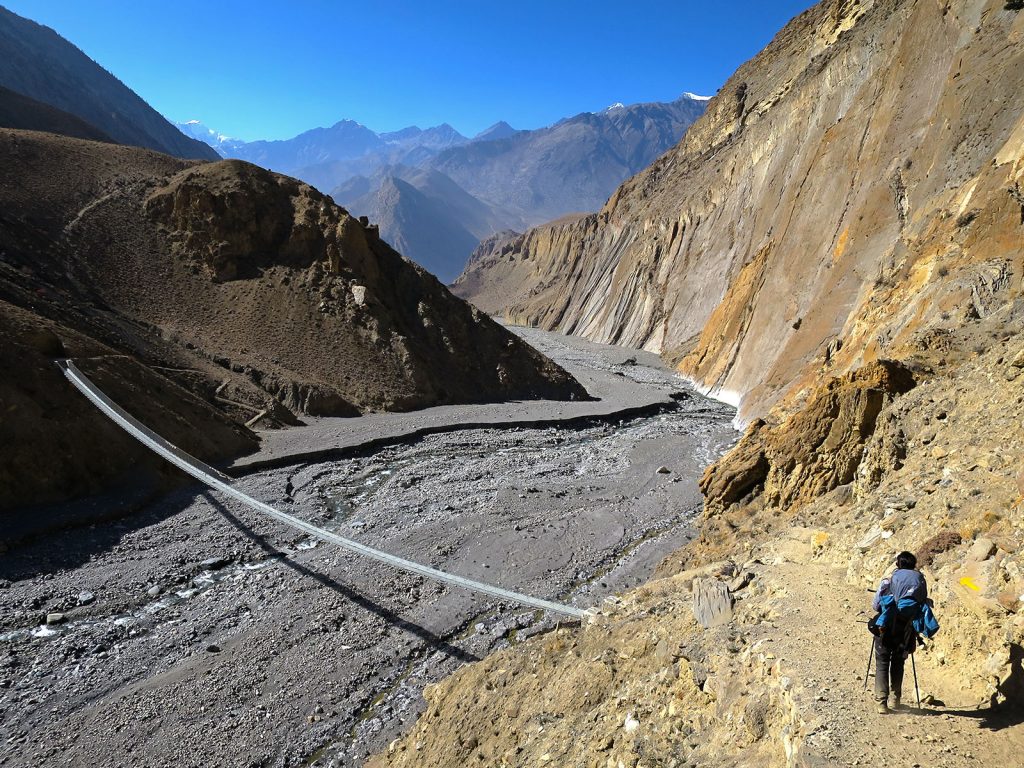
STAGE 13: Jomson - Chairo (see stage)
This is a fairly short, restful stage. Jomson is the capital of the valley and there are daily flights to Pokhara. The route runs along the left bank of the Kali Gandaki, at the foot of the Nilgiris. A seven-thousander with a terrifying north face.
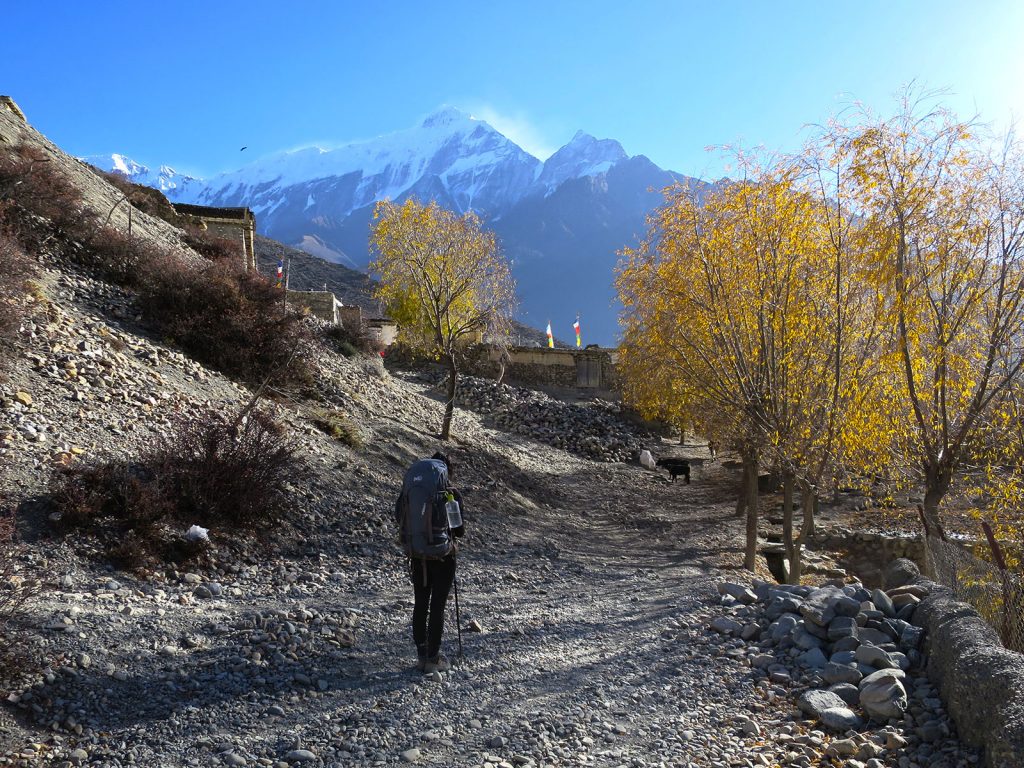
STAGE 14: Chairo - Kalopani (see stage)
Quiet day with only a small climb. In this stage we can enjoy some of the most extraordinary panoramic views of the entire Annapurna Circuit. Over the great plain of Kali Gandaki, the mass of Dhaulagiri (8,172m) rises 5,600m higher. Impressive.
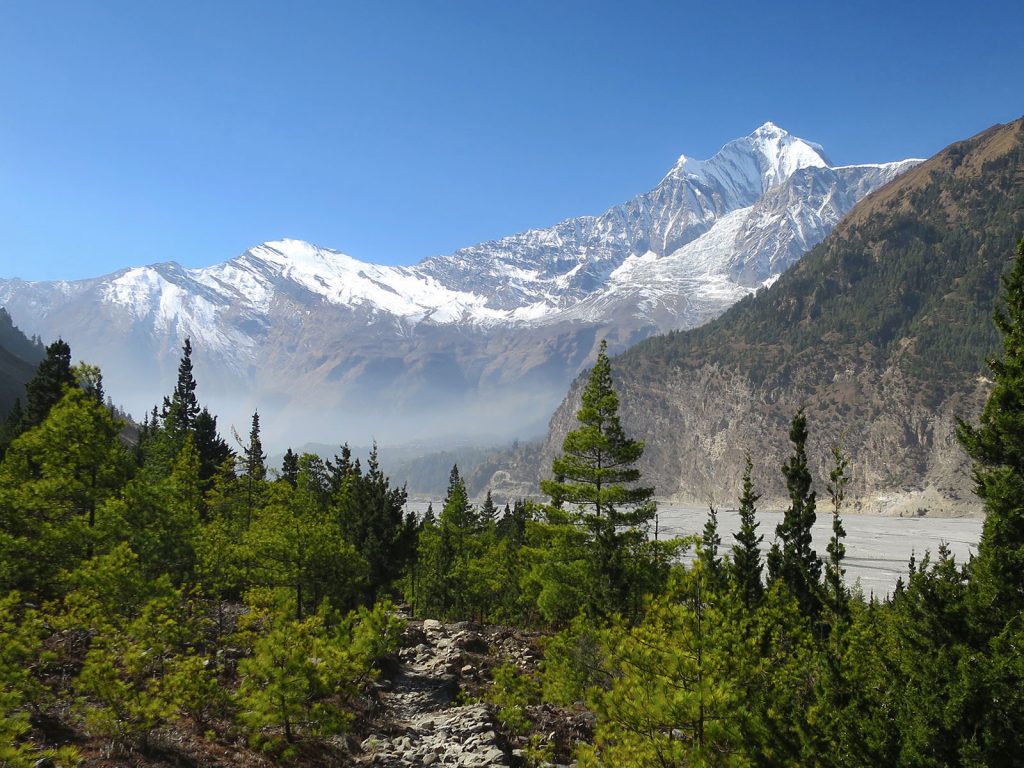
STAGE 15: Kalopani - Dhana (see stage)
We return to the area of the great forests. Today, for the first time since we started the route, we can see the summit of Annapurna I (8,091m). The stage follows the steep course of the Kali Gandaki along a broken path that goes up and down in search of the best areas to cross the canyon.
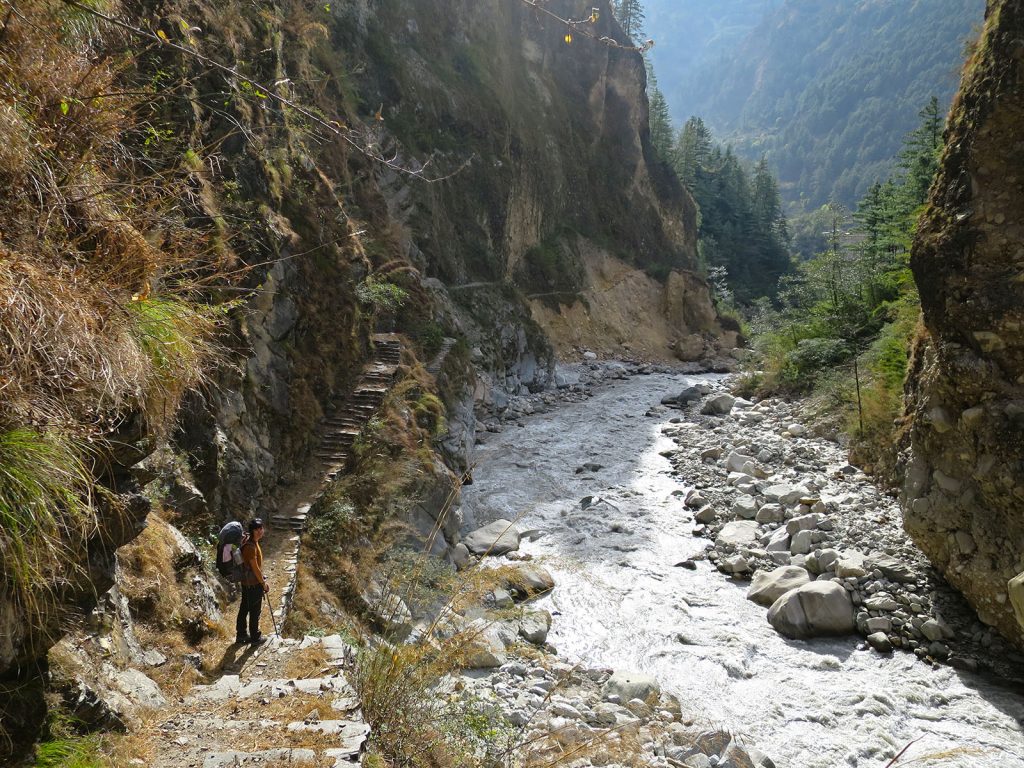
STAGE 16: Dhana - Shikha (see stage)
The first part of the stage is on country lanes and later on tracks, following the Kali Gandaki valley. After Tatopani, we leave the main valley and begin the climb to Ghorepani and Poon Hill. A 2,000m climb awaits.
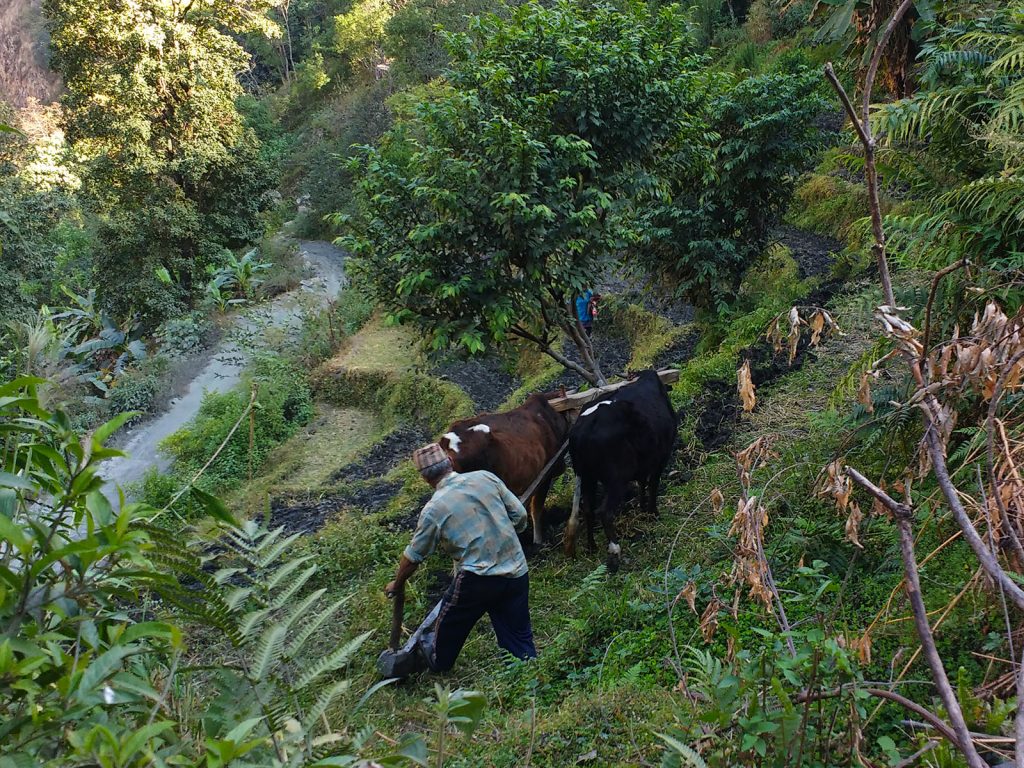
STAGE 17: Shikha - Ghorepani (see stage)
The route climbs through dense forest, small villages and typical farming terraces in a magical rural setting. At the end of the climb awaits Ghorepani, a resting place where the old caravans of traders used to find water (Pani) for their horses (Ghora).
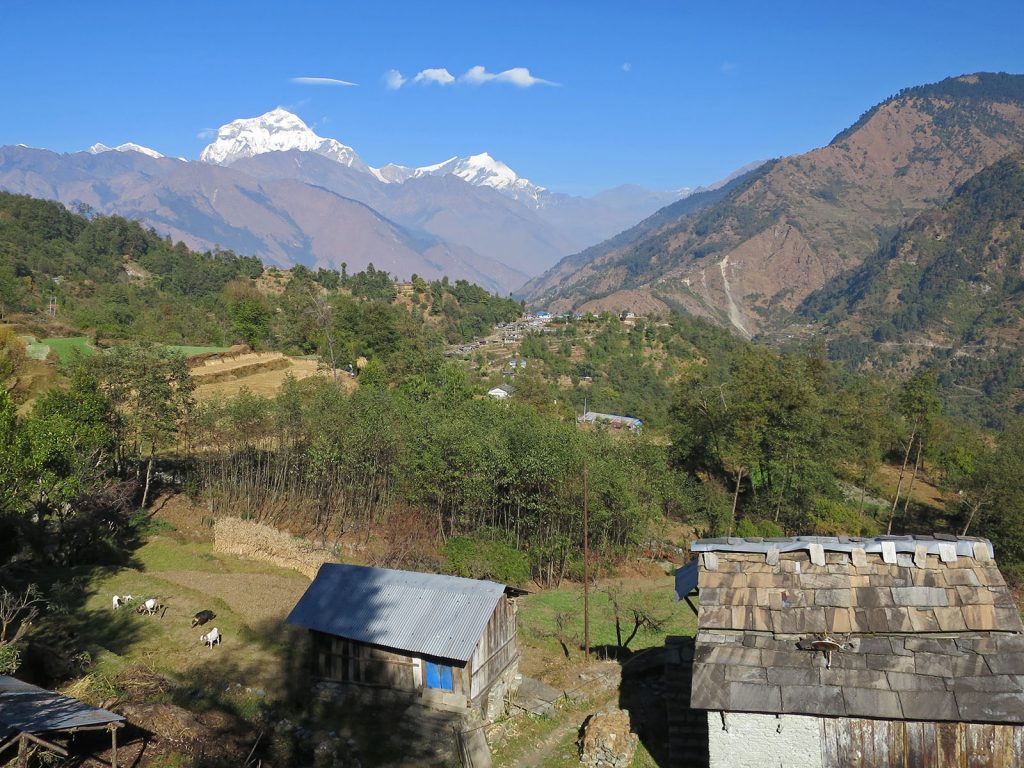
STAGE 18: Ghorepani - Poon Hll - Nayapul (see stage)
Contemplating the sunrise from Poon Hill, dyeing the Annapurna, Machhapuchre or Dhaulagiri with reddish colour is an incredible experience. This is undoubtedly one of the best viewpoints in the entire Himalayan range. The rest of the stage is all downhill, the longest of the entire route. The trail passes through rhododendron forests and enters a lush gorge before descending to the bottom of the Bhurungdi Khola, where it continues to Nayapul, the end of this great adventure.
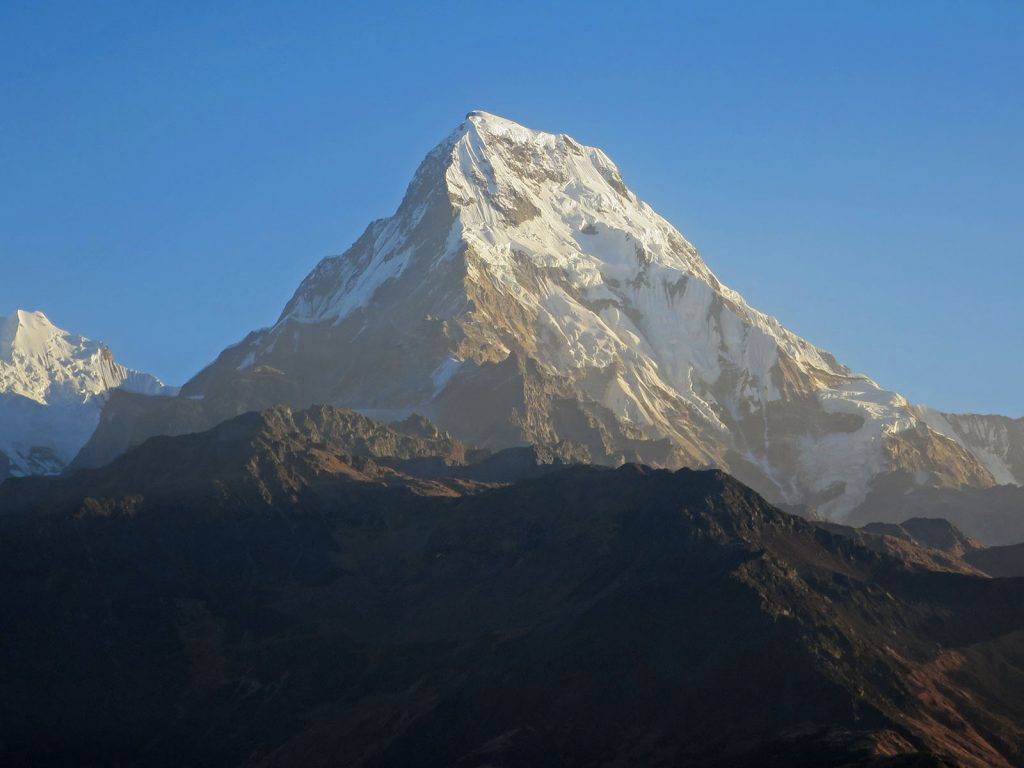
Don't miss any adventure in the Pyrenees!
